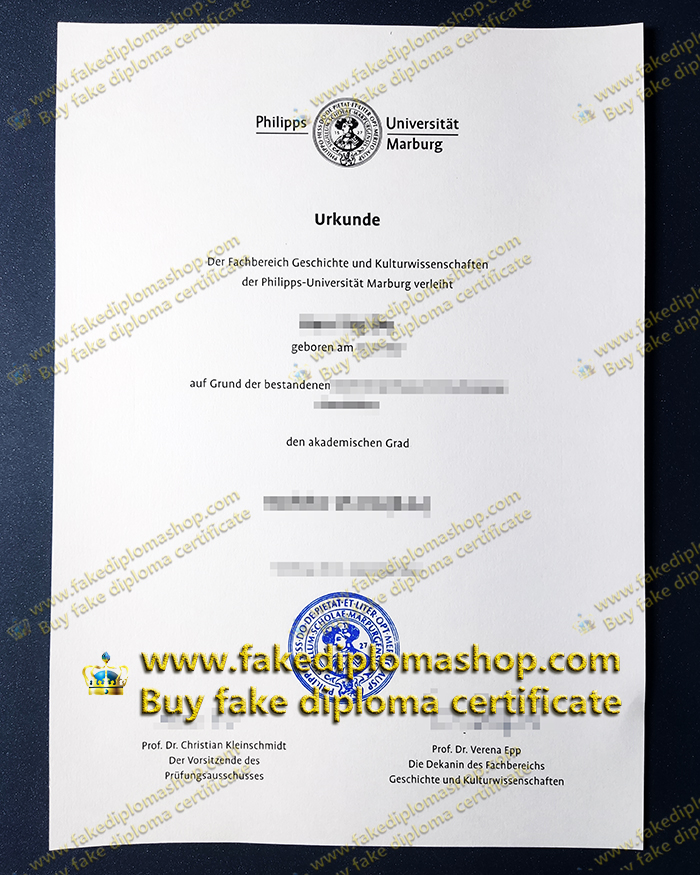
Philipps University of Marburg diploma, Philipps-Universität Marburg degree
Order a fake Philipps University of Marburg diploma online, How much to get a phony Philipps University of Marburg diploma? Where to find a fake diploma shop to buy a fake University of Marburg diploma? Can I buy a phony Philipps-Universität Marburg degree in Germany? Obtain a fake University of Marburg diploma of Bachelor for a better job, Nice Germany University diploma for sale. The Philipps University of Marburg (German: Philipps-Universität Marburg) was founded in 1527 by Philip I, Landgrave of Hesse, which makes it one of Germany’s oldest universities and the oldest still operating Protestant university in the world.
Marburg University is located in Marburg, a city in the middle of Hesse, Germany. It is a famous medieval university town in Germany and one of the ten most beautiful universities in Germany. It is 100 kilometers away from Frankfurt, Germany.
Marburg has the Max Plank Institute for Terrestrial Microbiology; As of 2020, 11 alumni of Marburg University have won the Nobel Prize, 13 has won the Leibniz Prize, and 96 Scientists have been included in the World’s Top 2% Scientists 2020-Stanford University.
In 1527, the European Reformation, initiated by German reformer Martin Luther, was in full swing in Hessian. The young Philipp I “der Grossmuthige “founded the world’s first Protestant university in Marburg, which is 494 years old as of 2021.
In the 18th century, the early Marburg University experienced its heyday under the leadership of Christian Wolff, who attracted numerous students as one of the formative thinkers of the European Enlightenment. By 1914, the number of students had increased fivefold to 4,000.
In the mid-20th century, under the leadership of Wolfgang Abendroth at the Political Science Institute of Marburg University, Frank Deppe promoted the University of Marburg as a center of socialist activities, earning it the reputation of the “Red University”. At the same time, the nature of the university changed to a modern popular university and was radically restructured in the 1970s with the introduction of departments and presidium.

